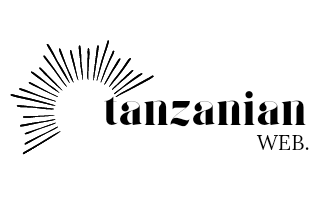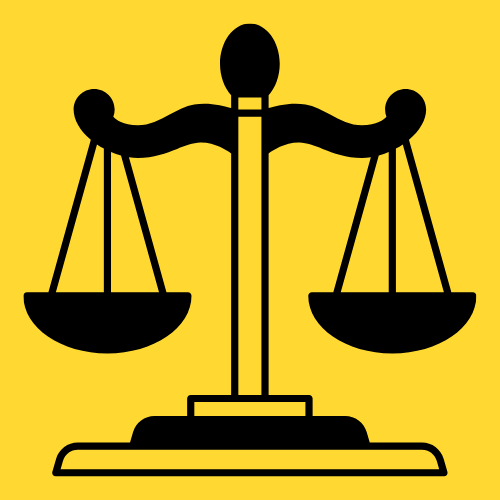“200”, Aptitude Test
Questions and Answers for Pilot II – Tanzania Ports Authority (TPA).
ABSTRACT
This set of 200 multiple-choice questions
is designed to help candidates preparing for the PILOT II (T.P.A) online
aptitude test in Tanzania. The questions cover key areas relevant to the duties
and qualifications of a Pilot II, including ship navigation, tug operations,
berthing and un-berthing procedures, maritime safety regulations, dry docking,
and the use of navigational equipment. The aim is to test the candidate’s
understanding of both theoretical knowledge and practical scenarios encountered
in marine transportation and port operations.
Prepared by:
Ship Pilots and compiled by
A lawyer stationed in Dar-es-salaam.
0628729934.
Date: June 1, 2025
Dear applicants,
This collection of questions and answers
has been carefully prepared to help all of you to understand the key areas
tested during the interview. The goal is to provide a useful, and practical
study guide so you can all perform confidently and fairly in the selection
process. I wish you the best of luck, and may this resource support you in
achieving success!
Warm regards,
Johnson Yesaya Mgelwa
For Personal Use by Applicants Preparing
for Pilot II interview at Tanzania Ports Authority (TPA).
ALL
QUESTIONS ARE COMPILED TOGETHER.
1. What is the primary
function of a tugboat?
A. Cargo handling B. Passenger transport C. Assisting vessel maneuvers D.
Speeding up vessels
Answer: C
2. Which instrument measures a
ship’s speed through water?
A. Barometer B. Anemometer C. Pitot tube D. Log
Answer: D
3. Berthing refers to:
A. Anchoring at sea B. Navigating through a canal C. Docking at a wharf D.
Launching a lifeboat
Answer: C
4. Deadweight of a vessel
refers to:
A. Ship’s own weight B. Cargo weight only C. Total carrying capacity D. Weight
of ballast only
Answer: C
5. Which side is starboard?
A. Front B. Rear C. Right D. Left
Answer: C
6. Which device is used to
steer a ship?
A. Rudder B. Keel C. Hull D. Bow
Answer: A
7. Which of the following is a
navigational aid?
A. Radar B. Pump C. Boiler D. Anchor
Answer: A
8. Which is the standard
marine distress frequency?
A. 406 MHz B. 121.5 MHz C. 16 MHz D. Channel 16 (VHF)
Answer: D
9. Which document contains a
ship’s cargo details?
A. Logbook B. Manifest C. Bill of lading D. Tally sheet
Answer: B
10. The compass used in
maritime navigation is called:
A. Magnetic compass B. Gyrocompass C. Digital compass D. Solar compass
Answer: B
11. A floating crane is used primarily
for:
A. Towing B. Lifting heavy loads at sea C. Navigation D. Anchoring
Answer: B
12. Which sea term means
turning the bow of the ship through the wind?
A. Bearing B. Tacking C. Heaving D. Mooring
Answer: B
13. In which direction do
longitudinal lines run on nautical charts?
A. East to west B. North to south C. Diagonal D. Circular
Answer: B
14. A ship’s draft is measured
from:
A. Keel to mast B. Waterline to keel C. Deck to bridge D. Bow to stern
Answer: B
15. Which term refers to the
rear part of the vessel?
A. Bow B. Keel C. Stern D. Port
Answer: C
16. Tugs are used to:
A. Haul cargo B. Rescue passengers C. Assist in docking D. Transport mail
Answer: C
17. Who is in charge of
navigational safety on board?
A. Chief Engineer B. Deck Cadet C. Pilot D. Captain
Answer: D
18. A nautical mile is
approximately equal to:
A. 1000 meters B. 1609 meters C. 1852 meters D. 2000 meters
Answer: C
19. Which of these is used for
anchoring a vessel?
A. Rudder B. Crane C. Ballast D. Anchor
Answer: D
20. The international signal
for “man overboard” is:
A. Three short blasts B. Continuous bell ringing C. Oscar flag D. Alpha flag
Answer: C
21. Dry docking is done to:
A. Load cargo B. Paint the hull C. Repair underwater parts D. Refuel
Answer: C
22. Which term refers to the
ship's left side?
A. Starboard B. Port C. Stern D. Bow
Answer: B
23. The device used to measure
depth is:
A. Radar B. Sonar C. Echo sounder D. Altimeter
Answer: C
24. A vessel navigating under
power gives way to a vessel:
A. At anchor B. Under sail C. Fishing D. All the above
Answer: D
25. Which is a hazard when
berthing a ship?
A. Fire outbreak B. Pilotage error C. Fuel shortage D. Tidal wave
Answer: B
26. IMO stands for:
A. International Marine Order B. International Maritime Organization C. Inland
Marine Office D. International Map Office
Answer: B
27. A "not under
command" vessel shows lights that are:
A. White and green B. Two red C. One red and one white D. Two white
Answer: B
28. Which is NOT a
navigational light?
A. Masthead light B. Stern light C. Port light D. Boiler light
Answer: D
29. Buoys are used for:
A. Cargo storage B. Marking channels C. Passenger transport D. Collecting rain
Answer: B
30. The abbreviation
"ETA" stands for:
A. Estimated Tug Arrival B. Emergency Time Announcement C. Estimated Time of
Arrival D. Engine Temperature Analysis
Answer: C
31. Tidal currents are
strongest during:
A. Neap tide B. Slack water C. Spring tide D. Equinox
Answer: C
32. When a vessel is
‘aground’, it means:
A. Floating freely B. Tied to a buoy C. Touching bottom D. Anchored
Answer: C
33. A course plotted on a
chart is measured in:
A. Meters B. Knots C. Degrees D. Nautical miles
Answer: C
34. The term “collision
regulations” refers to rules that:
A. Govern speed limits B. Prevent ship collisions C. Monitor cargo loading D.
Control crew safety
Answer: B
35. Wind direction is named
after:
A. Where it’s going B. Where it comes from C. The nearest coast D. The
strongest gust
Answer: B
36. The load line on a ship
indicates:
A. Draft limit B. Cargo volume C. Water displacement D. Safety deck
Answer: A
37. Which of these is a tug
maneuver?
A. Push-pull B. Drift C. Trim D. List
Answer: A
38. The primary function of a
marine pilot is to:
A. Steer aircraft B. Secure cargo C. Navigate ships in ports D. Manage engine
rooms
Answer: C
39. A vessel operating in fog
should sound:
A. One long blast every 2 minutes B. Three short blasts C. Two prolonged blasts
every 10 minutes D. Ring a bell continuously
Answer: A
40. The abbreviation “AIS”
stands for:
A. Automated Inland System B. Automatic Identification System C. Air Interface
Station D. Anchorage Inspection Survey
Answer: B
41. A pilot ladder must comply
with which regulation?
A. STCW B. SOLAS C. MARPOL D. ISM
Answer: B
42. The bridge of a ship is
used for:
A. Cooking B. Steering and control C. Crew accommodation D. Engine repair
Answer: B
43. The key risk when
operating a floating crane is:
A. Submersion B. Overloading and tipping C. Fuel leakage D. Deck corrosion
Answer: B
44. Ballast water is used to:
A. Cook food B. Generate power C. Stabilize the ship D. Anchor the vessel
Answer: C
45. Which certificate proves a
vessel is seaworthy?
A. Logbook B. Safety Equipment Certificate C. Tonnage Certificate D. Radio
Certificate
Answer: B
46. A tide table shows:
A. Wind direction B. Wave height C. Water depth D. Time and height of tides
Answer: D
47. A vessel is trimmed when:
A. It floats level B. It is tilted sideways C. The bow is deeper than the stern D.
It is overloaded
Answer: A
48. The SOLAS convention is
concerned with:
A. Salaries B. Safety of life at sea C. Licensing of crew D. Oil pollution
Answer: B
49. The abbreviation “COLREGs”
refers to:
A. Collision Regulation B. Cold Region Signals C. Collected Registers D. Cargo
Loading Rules
Answer: A
50. An enclosed lifeboat
offers:
A. Speed B. Better view C. More protection from weather D. Easier escape
Answer: C
📘 Get the Full Aptitude Test PDF (Questions 51–200)
You’ve just accessed the first 50 questions. The full set of 200 expertly prepared aptitude test questions for the Pilot II position is available for download in a PDF format
To receive the full PDF (Questions 51–200), please make a payment of Tsh 10,000 to the LIPA number below:
After payment, please send a text message with the words “Pilot TPA” to:
⚠️ Important Notice
- The PDF is watermarked and protected for personal use only.
- Redistribution, sharing, screenshotting, or copying the contents is strictly prohibited.
- Legal action may be taken against the misuse of this material.
Thank you for supporting quality content. Best of luck in your interview preparation!


%20(10).png)





0 Comments
PLACE YOUR COMMENT HERE
WARNING: DO NOT USE ABUSIVE LANGUAGE BECAUSE IT IS AGAINST THE LAW.
THE COMMENTS OF OUR READERS IS NOT OUR RESPONSIBILITY.